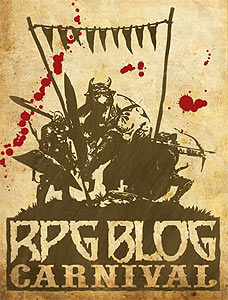 Unless your game is a simple series of published dungeon crawls with little to no storyline, it’s a good idea to create a player packet (also commonly called a campaign pack or game packet) for your players. This packet should contain all the information players need to create their characters.
Unless your game is a simple series of published dungeon crawls with little to no storyline, it’s a good idea to create a player packet (also commonly called a campaign pack or game packet) for your players. This packet should contain all the information players need to create their characters.
You need to know what you want your campaign to before you create your player packet. Use your elevator pitch, if you created one. If not, you want to express your campaign idea as simply as you can. This version of the campaign idea is for the players: it may differ from the version in your notes. After all, you don’t want to give away any secrets in advance. Still, reveal as much as you can; think of this as a commercial or preview of your game and make it as exciting as you can. Some GMs even create video “trailers” for their game. This is a great idea if you have the time, skill, and software to produce it. Don’t worry if you don’t; a printed packet is more than sufficient.
Your packet should tell players what to expect from your game. You want to highlight the parts of your game that make it different from the “typical” game of that system and from other campaigns you’ve run. The second job of your player packet is to entice your players and make them as excited about the game as you are. (if you aren’t excited about your game, you need to retool your campaign concept until you are. Because if you’re not excited about this idea, your players won’t be, either.) There’s no wrong way to write a campaign packet, but try to match the tone you want for your game. Use active verbs, possibly even second person viewpoint. Anything you can think of that will build interest.
Divide your player packet into three sections:
- Information players need to create their characters. Be sure to include any house rules or character restrictions in this section.
- A brief introduction to your game world. This part should be a quick, general overview of the most important points. Just include a basic overview of the most important parts of your setting that are of direct importance to starting characters. Keep it short. Don’t expect them to read a 200 page description detailing every piece of cultural information you can cram in there and expect them to skim (if you’re lucky) the information you do include.
- A brief summary of game mechanics. Don’t copy pages of the book—just provide a summary in note form. You just want to give them a cheat sheet to the most important and commonly used mechanics. Even if you don’t include a mechanics cheat sheet, you still need to detail any house rules and any table rules you want the players to follow. It’s also a good idea to make a list of any game books you’ll be using beyond the core rules.
Even if your players are die-hard setting junkies who will eagerly pounce on every tidbit of information you provide, you should still weed your information down to the most important points for your player packet. You can give them the rest of the information just before it becomes important. Or you can provide them with a separate setting booklet, describing your world in full detail. Again, include only the things of most importance to the players. By sorting your campaign ideas into core ideas versus side issues, you can tighten up your own notes and have a better idea of what are the central points of your campaign and what can be dropped if necessary.
Consider adding maps and illustrations to help jazz your pack up. If you’re not an artist yourself, check out stock art sites. Many time even paid stock art sites will have some free images you can use. Or you can often get a few images for a nominal fee. Here are some places to get stock art:
- Shutterstock (http://www.shutterstock.com/)
- Illustration Works (http://www.illustrationworks.com/index.php)
- the i spot (http://www.theispot.com/)
- Dreamstime (http://www.dreamstime.com/)
- Stockart.com (http://www.stockart.com/index.php)
- iStockphoto (http://www.istockphoto.com/)
The important thing about a player packet is that it’s for the players. It’s not to show off your writing skills, or to detail every last inch of your game world. Keep your player packet short and useful.
Related articles
- August Blog Carnival: Campaign Creation (rpggm.com)
- The Question Campaign (gnomestew.com)






